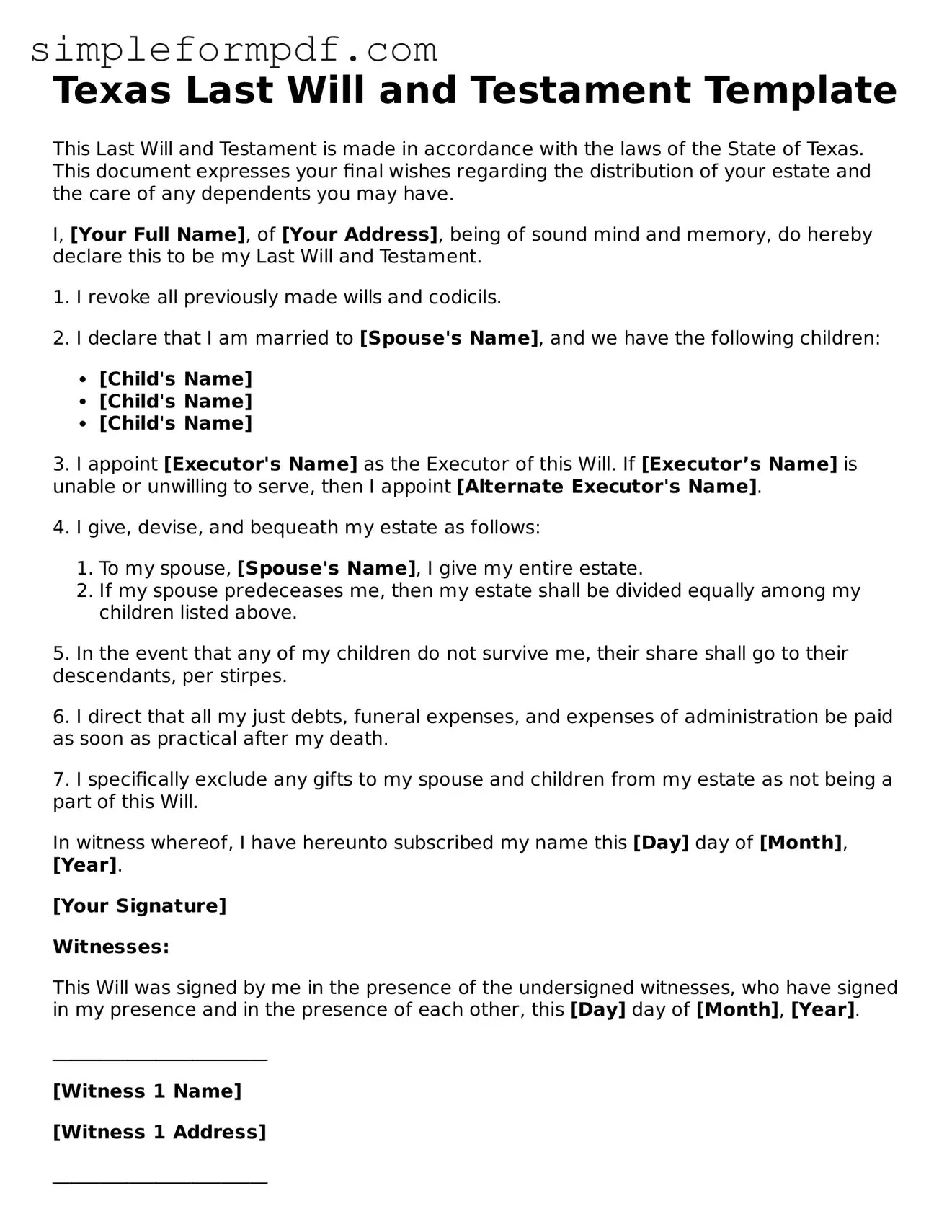Texas Last Will and Testament Template
This Last Will and Testament is made in accordance with the laws of the State of Texas. This document expresses your final wishes regarding the distribution of your estate and the care of any dependents you may have.
I, [Your Full Name], of [Your Address], being of sound mind and memory, do hereby declare this to be my Last Will and Testament.
1. I revoke all previously made wills and codicils.
2. I declare that I am married to [Spouse's Name], and we have the following children:
- [Child's Name]
- [Child's Name]
- [Child's Name]
3. I appoint [Executor's Name] as the Executor of this Will. If [Executor’s Name] is unable or unwilling to serve, then I appoint [Alternate Executor's Name].
4. I give, devise, and bequeath my estate as follows:
- To my spouse, [Spouse's Name], I give my entire estate.
- If my spouse predeceases me, then my estate shall be divided equally among my children listed above.
5. In the event that any of my children do not survive me, their share shall go to their descendants, per stirpes.
6. I direct that all my just debts, funeral expenses, and expenses of administration be paid as soon as practical after my death.
7. I specifically exclude any gifts to my spouse and children from my estate as not being a part of this Will.
In witness whereof, I have hereunto subscribed my name this [Day] day of [Month], [Year].
[Your Signature]
Witnesses:
This Will was signed by me in the presence of the undersigned witnesses, who have signed in my presence and in the presence of each other, this [Day] day of [Month], [Year].
_______________________
[Witness 1 Name]
[Witness 1 Address]
_______________________
[Witness 2 Name]
[Witness 2 Address]
In the event that any part of this Will is deemed invalid or unenforceable, the remaining provisions shall continue to be valid and effective.
Signed this [Day] day of [Month], [Year].
